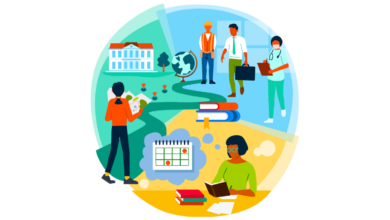The benefits and challenges of blended learning: combining online and in-person instruction
Blended learning is a teaching approach that combines both online and in-person instruction to provide learners with a more flexible and personalized learning experience. In this model, students attend some classes in-person, while others are conducted online. The benefits of blended learning are numerous, but it also comes with a few challenges that need to be addressed. In this article, we will explore the benefits and challenges of blended learning.
Benefits of Blended Learning
Personalized Learning
Blended learning allows teachers to tailor their instruction to meet the individual needs of each student. This is because online learning provides opportunities for students to learn at their own pace, in their own time, and in their own way. Teachers can use data analytics to monitor student progress and adjust instruction accordingly, providing students with the support and guidance they need to succeed.
Increased Flexibility
Blended learning provides students with increased flexibility in their learning experience. Students can access course content and complete assignments at their own pace and on their own schedule, freeing up time for other activities. This is especially beneficial for adult learners who have work or family responsibilities.
Improved Engagement
Blended learning can improve student engagement by providing a variety of instructional methods. Students can interact with their peers and teachers in-person, as well as online through discussion forums, virtual classrooms, and other digital tools. This can enhance the learning experience and promote collaboration and teamwork.
Cost-Effective
Blended learning can be a cost-effective option for educational institutions. Online instruction can reduce the need for physical classrooms and other resources, such as textbooks and course materials. This can result in significant cost savings for both students and schools.
Accessible Learning
Blended learning can increase access to education for students who may have difficulty attending in-person classes. Students who live in remote areas, have disabilities, or have other constraints that make attending in-person classes difficult, can benefit from blended learning.
Challenges of Blended Learning
Technical Issues
Blended learning requires reliable access to technology and the internet. Technical issues, such as slow internet speeds, malfunctioning software, and hardware failures, can disrupt the learning experience and cause frustration for both students and teachers.
Lack of Face-to-Face Interaction
Blended learning may reduce the amount of face-to-face interaction between students and teachers. This can limit the opportunity for students to receive immediate feedback and support from their teachers. Additionally, students may miss out on social interactions with their peers, which are important for building relationships and developing interpersonal skills.
Teacher Training
Blended learning requires teachers to have the skills and knowledge to effectively use technology and online instructional tools. Many teachers may not have received adequate training in this area, which can result in ineffective use of technology and reduced student learning outcomes.
Student Motivation
Blended learning requires students to be motivated and self-directed in their learning. Some students may struggle with the increased responsibility and self-discipline required for online learning, which can result in lower student engagement and achievement.
Access to Technology
Blended learning may require students to have access to technology and the internet outside of school. This can be a challenge for students who come from low-income families or who live in areas with limited internet access.
How to Optimize Blended Learning
Provide Adequate Teacher Training
To optimize blended learning, teachers need adequate training in the use of technology and online instructional tools. This can include training on how to use learning management systems, online discussion forums, and other digital tools. Teachers also need support in using data analytics to monitor student progress and adjust instruction accordingly.
Ensure Reliable Technology Infrastructure
To ensure a smooth and effective blended learning experience, educational institutions need to provide reliable technology infrastructure. This includes high-speed internet access, up-to-date hardware and softwar, and technical support for students and teachers.
Foster Face-to-Face Interaction
Although blended learning is a combination of online and in-person instruction, it is important to maintain face-to-face interaction between students and teachers. Teachers can use in-person classes to provide immediate feedback and support, and to foster social interactions between students.
Promote Student Motivation
To promote student motivation and engagement in blended learning, teachers can provide regular feedback and support, and offer a variety of instructional methods. Teachers can also encourage students to set goals and track their progress, and provide opportunities for students to work collaboratively with their peers.
Provide Access to Technology
To ensure that all students have access to technology and the internet, educational institutions can provide loaner devices, mobile hotspots, and other resources to students who may not have them. Educational institutions can also partner with local community organizations to provide access to technology and the internet outside of school.




